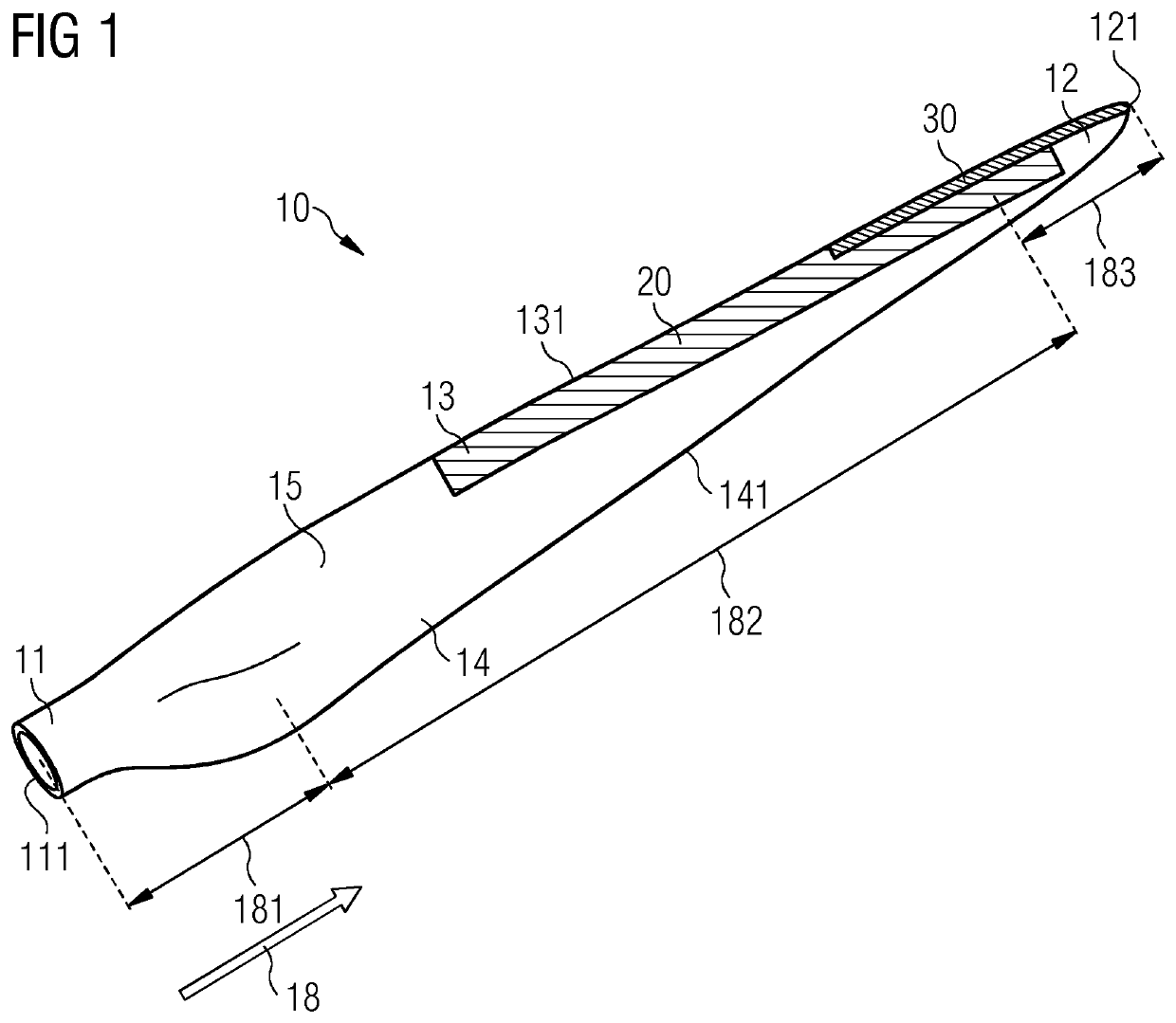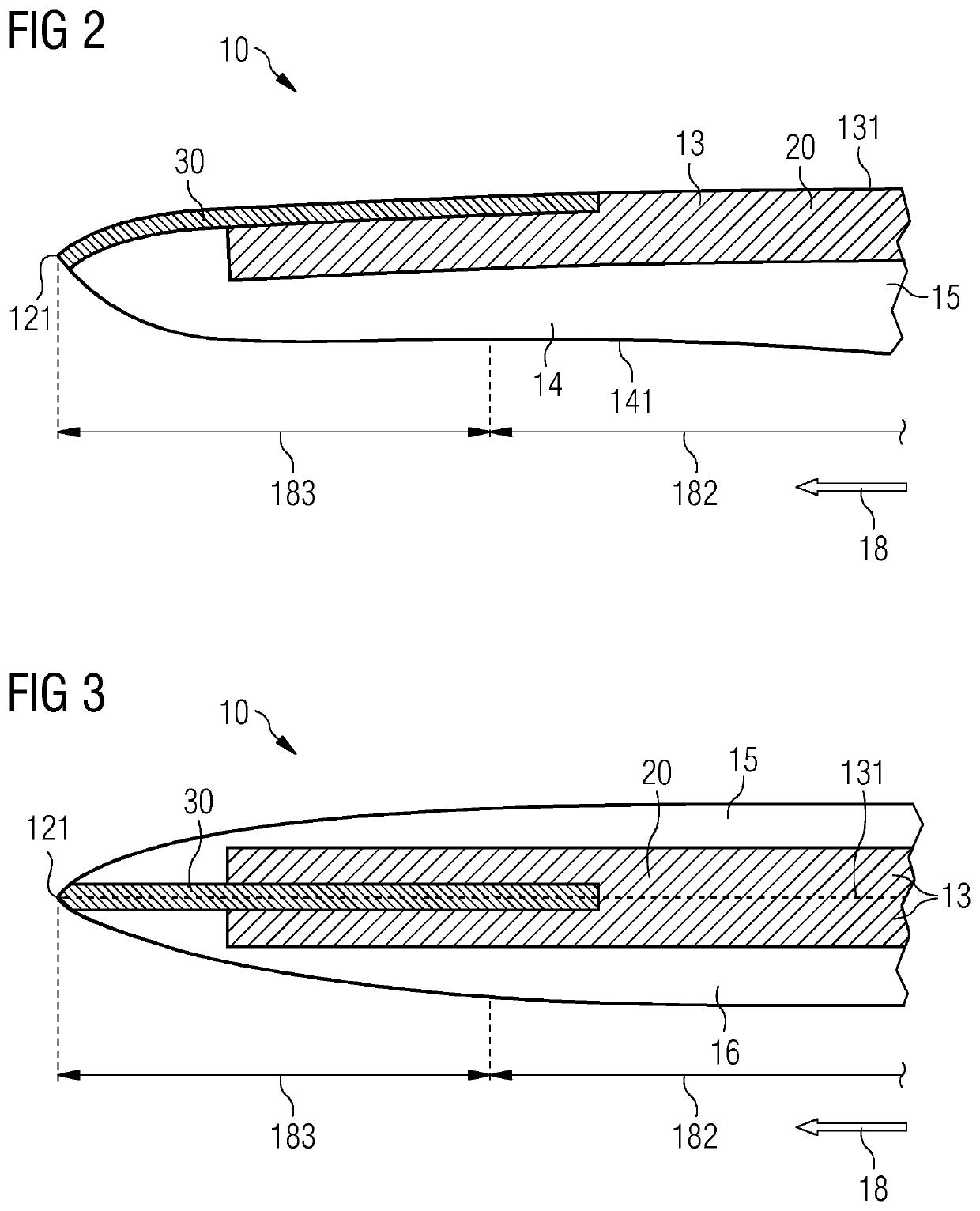Insulation of a heating mat of a wind turbine blade
a technology of wind turbine blade and heating mat, which is applied in the direction of ohmic-resistance heating, mechanical equipment, machines/engines, etc., can solve the problems of reducing the aerodynamic efficiency of the rotor blade and, hence, the wind turbine, and the rotor blade which is partially or completely covered with ice, etc., and affecting the aerodynamic efficiency
- Summary
- Abstract
- Description
- Claims
- Application Information
AI Technical Summary
Benefits of technology
Problems solved by technology
Method used
Image
Examples
Embodiment Construction
[0045]FIG. 1 shows a perspective view of a known rotor blade 10 of a wind turbine. The rotor blade 10 comprises a root section 11 with a root 111 and, at its opposite end, a tip section 12 with a tip 121. The spanwise direction 18 of the rotor blade 10 is defined as the direction of a straight line extending from the root 111 to the tip 121 of the rotor blade 10. The rotor blade 10 further comprises a leading-edge section 13 with a leading edge 131 and a trailing edge section 14 with a trailing edge 141. The leading edge 131 and the trailing edge 141 divide the surface of the rotor blade 10 into a suction side 15 and a pressure side 16. FIG. 1 shows a view onto the suction side 15 of the rotor blade 10.
[0046]The trailing edge section 14 is defined as that section which is adjacent to the trailing edge 141 and extends until ten percent in chordwise direction. Likewise, the leading-edge section 13 extends until ten percent in chordwise extension away from the leading edge 131.
[0047]Th...
PUM
 Login to View More
Login to View More Abstract
Description
Claims
Application Information
 Login to View More
Login to View More - R&D
- Intellectual Property
- Life Sciences
- Materials
- Tech Scout
- Unparalleled Data Quality
- Higher Quality Content
- 60% Fewer Hallucinations
Browse by: Latest US Patents, China's latest patents, Technical Efficacy Thesaurus, Application Domain, Technology Topic, Popular Technical Reports.
© 2025 PatSnap. All rights reserved.Legal|Privacy policy|Modern Slavery Act Transparency Statement|Sitemap|About US| Contact US: help@patsnap.com



